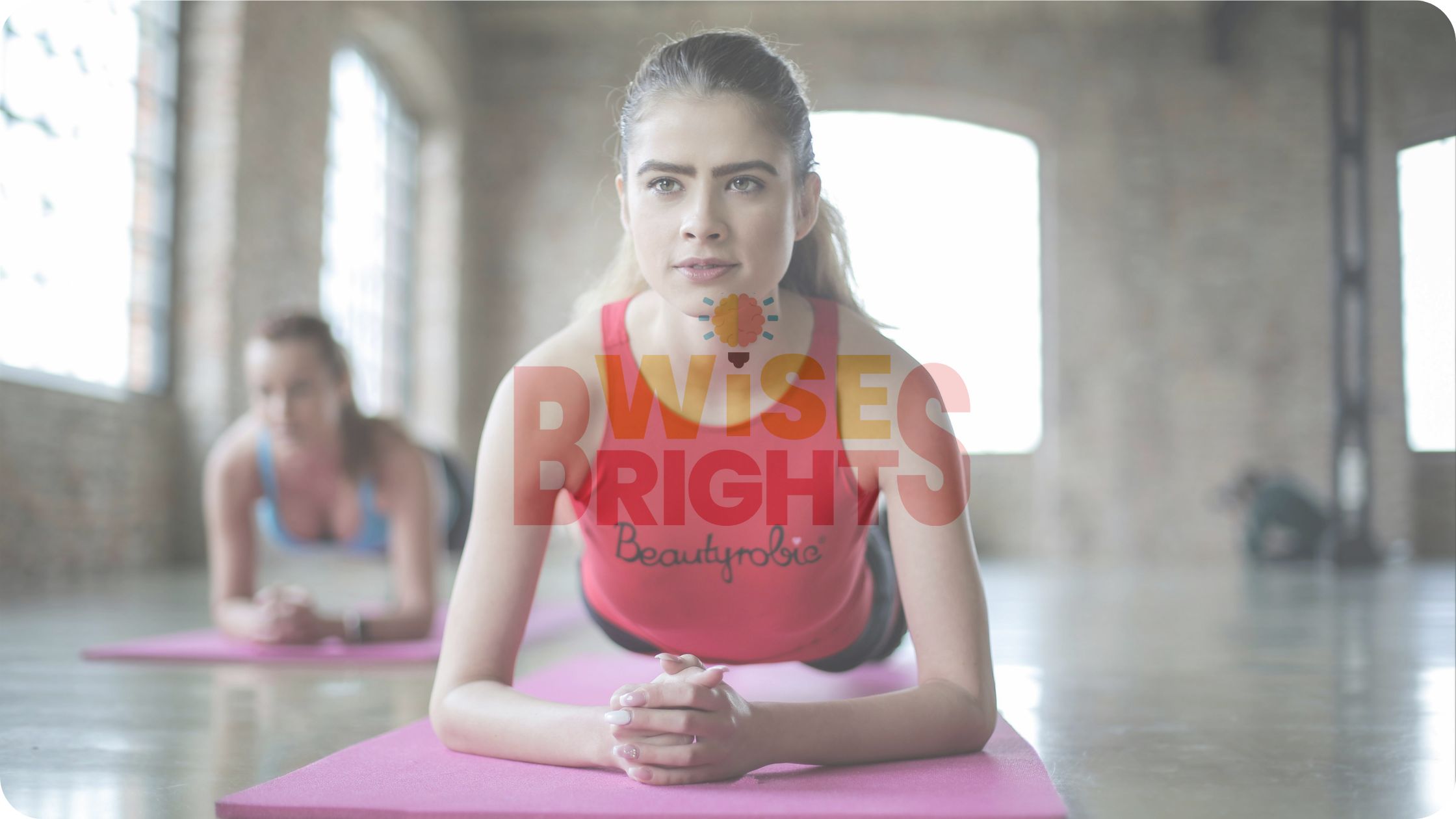Your Pocket-Sized Personal Trainer: Fitness Freedom at Your Fingertips
The fitness industry has undergone a remarkable transformation over the past few years. More people are discovering that achieving their health goals doesn’t require expensive gym memberships, complicated equipment, or even leaving their homes. The shift toward home-based fitness and digital wellness has empowered millions to take control of their health journey on their own terms. As Wise Brights explores in their wellness insights, technology continues to reshape how we approach personal health and fitness.
This revolution is largely driven by smartphone technology and innovative fitness applications. These apps have democratized access to professional training, nutrition guidance, and wellness support that was once available only to those who could afford personal trainers or premium gym memberships.
Why gym memberships aren’t necessary anymore comes down to three key factors: accessibility, affordability, and personalization. Fitness apps provide 24/7 access to workouts, cost a fraction of traditional gym fees, and adapt to individual needs and schedules. Whether someone is a busy professional squeezing in a quick workout between meetings or a parent exercising during naptime, these apps meet people where they are.
What makes a great fitness app? The best applications combine user-friendly interfaces with proven training methods, offer flexibility in workout duration and intensity, provide clear instruction and demonstration, track progress effectively, and keep users motivated through challenges, community features, or achievement systems. The following five apps excel in these areas while each bringing something unique to the table.
1. Nike Training Club: Professional Training, Zero Equipment Required

What It Does and Key Features
Nike Training Club transforms any space into a personal training studio. The app delivers an extensive library of over 190 workouts spanning multiple disciplines, including strength training, HIIT, yoga, mobility work, and endurance exercises. Each workout features professional trainers demonstrating proper form through high-quality video instruction.
The app’s intelligent program builder creates customized training plans based on user input regarding fitness goals, available time, and equipment access. Users can choose from four to six-week programs designed for specific outcomes like getting lean, building strength, or improving overall fitness.
Target Audience and Fitness Levels
Nike Training Club caters to everyone, from complete beginners taking their first steps into fitness to advanced athletes seeking challenging routines. The app specifically serves people who prefer working out at home, travelers who need portable workout solutions, and anyone looking for professional guidance without the professional price tag.
Standout Functionality
The standout feature is the app’s adaptive training programs that evolve with user progress. The integration with Apple Watch and other fitness trackers provides real-time heart rate monitoring and performance metrics. Additionally, the audio-guided workouts allow users to exercise without constantly watching their screens.
Pricing Structure
Nike Training Club offers most features completely free, making it one of the most accessible premium-quality fitness apps available. There’s no catch, no limited trial period—users get full access to the workout library and basic programs at no cost. Premium features, when available, typically focus on advanced analytics and additional content.
Pros and Cons
Pros:
- Extensive free workout library
- Professional trainer instruction
- No equipment required for many workouts
- Excellent video quality and instruction
- Customizable programs
Cons:
- Some users find the interface slightly cluttered
- Limited community features compared to competitors
- Workout filtering could be more intuitive
2. Strava: Track Your Pace, Fuel Your Competitive Spirit

What It Does and Key Features
Strava functions as both a performance tracking tool and a social network for athletes. The app uses GPS technology to record detailed metrics for runs, rides, walks, and other outdoor activities. Beyond basic tracking, it provides segment leaderboards where users compete for fastest times on specific route sections, detailed performance analytics, training logs, and route planning capabilities.
Target Audience and Fitness Levels
Strava primarily attracts runners, cyclists, and outdoor activity enthusiasts who are motivated by data and friendly competition. The app works equally well for casual exercisers tracking weekend jogs and serious athletes preparing for races or events. Anyone who enjoys outdoor cardio activities and appreciates measurable progress will find value in Strava.
Standout Functionality
The segment competition feature makes Strava unique. Popular routes are divided into segments, and the app automatically tracks how fast users complete each segment compared to others. This gamification element transforms ordinary workouts into competitive challenges. The app also excels at device integration, seamlessly syncing with virtually every fitness watch, heart rate monitor, and cycling computer on the market.
Pricing Structure
Strava offers a robust free tier that includes basic activity tracking, route mapping, and social features. Strava Summit (the premium subscription) costs approximately $5-$10 monthly or $60 annually, unlocking advanced analytics, training plans, live performance feedback, and enhanced safety features.
Pros and Cons
Pros:
- Excellent GPS tracking accuracy
- Strong community and social features
- Comprehensive device compatibility
- Motivating segment challenges
- Detailed performance analytics
Cons:
- Many advanced features require paid subscription
- Primarily focused on outdoor activities
- Can drain phone battery during long activities
- Social features may not appeal to privacy-focused users
3. MyFitnessPal: Know What You Eat, Control What You Achieve

What It Does and Key Features
MyFitnessPal serves as a comprehensive nutrition and calorie tracking platform. The app’s database contains over 14 million foods, making it simple to log meals with accuracy. Key features include barcode scanning for packaged foods, recipe importing and creation, macro and micronutrient tracking, meal planning tools, and integration with numerous fitness apps and devices for exercise calorie calculation.
Target Audience and Fitness Levels
This app targets anyone focused on nutrition as part of their fitness journey—those trying to lose weight, athletes monitoring macros for performance, individuals managing specific dietary requirements, or people simply wanting to develop better eating awareness. It works for all fitness levels since nutrition matters regardless of training intensity.
Standout Functionality
The barcode scanner revolutionizes food logging by eliminating tedious manual entry. Users simply scan product barcodes, and the app instantly logs complete nutritional information. The app’s massive food database and meal memory features (remembering frequently eaten foods and meals) make daily logging surprisingly quick once users establish their routine.
Pricing Structure
MyFitnessPal offers a free version with core functionality, including food logging, calorie tracking, and basic reports. The premium version costs approximately $10-$20 monthly or $50-$80 annually, adding features like advanced macro goals, meal planning, deeper nutritional insights, and an ad-free experience.
Pros and Cons
Pros:
- Largest food database available
- Fast barcode scanning
- Excellent app integrations
- The free version is highly functional
- Strong community support forums
Cons:
- The user-submitted database sometimes contains inaccurate entries
- Premium features can feel essential, but come at an added cost
- The interface can feel overwhelming initially
- Ads in the free version may distract some users
4. Headspace: Calm Your Mind, Strengthen Your Resolve

What It Does and Key Features
Headspace brings meditation and mindfulness practices into daily routines through guided audio sessions. The app offers structured meditation courses for beginners, single meditation sessions for specific situations, sleep sounds and sleepcasts for better rest, mindful movement exercises, and focus music for productivity enhancement.
Target Audience and Fitness Levels
Headspace serves anyone interested in mental wellness, stress management, and the mind-body connection in fitness. It’s particularly valuable for people dealing with workout anxiety, those needing better sleep for recovery, individuals managing stress that impacts fitness motivation, and anyone wanting to enhance their overall wellness beyond just physical exercise.
Standout Functionality
The app’s progressive course structure makes meditation approachable for beginners while offering depth for experienced practitioners. The sleep content, including sleepcasts (bedtime stories for adults), has helped countless users improve sleep quality—a crucial but often overlooked component of fitness and recovery. The animation style and friendly tone remove intimidation from the meditation process.
Pricing Structure
Headspace offers limited free content, including basics courses and select meditations. Full access requires a subscription of approximately $13 monthly or $70 annually. Student and family plans are also available at reduced rates.
Pros and Cons
Pros:
- Excellent for beginners
- High-quality content and instruction
- Variety of meditation lengths and focuses
- Outstanding sleep content
- Pleasant, non-intimidating approach
Cons:
- Limited free content
- Higher subscription cost compared to some competitors
- Some users want more advanced, longer meditations
- Requires consistent use to see benefits
5. Peloton App: Bring the Energy of a Studio Class to Any Room

What It Does and Key Features
The Peloton App extends the boutique studio experience into homes worldwide. It delivers live and on-demand classes across multiple disciplines, including cycling, running, strength training, yoga, HIIT, stretching, meditation, and walking. Classes range from five-minute quick sessions to hour-long comprehensive workouts, all led by energetic, motivating instructors.
Target Audience and Fitness Levels
Peloton attracts people who thrive on the energy and motivation of group classes, those with unpredictable schedules needing flexible workout times, users wanting variety to prevent workout boredom, and individuals who appreciate high-production-value content with engaging instructors. The class variety accommodates all fitness levels from beginner to advanced.
Standout Functionality
The live class feature creates real-time accountability and community connection even when working out alone at home. The instructor quality sets Peloton apart—these aren’t just fitness professionals but entertainers who make workouts genuinely enjoyable. The app works with or without Peloton equipment, though it integrates seamlessly with Peloton hardware when available.
Pricing Structure
The Peloton App subscription costs approximately $13-$15 monthly, providing access to the entire class library across all disciplines. This is separate from and less expensive than the full Peloton membership required for connected equipment features. A free trial period allows users to test the service before committing.
Pros and Cons
Pros:
- Huge variety of class types and lengths
- Exceptional instructor quality and energy
- New content is added constantly
- Works without Peloton equipment
- High production quality
Cons:
- Subscription required for meaningful use
- Can feel overwhelming due to extensive options
- Some classes require basic equipment
- Live class times may not suit all schedules
Comparison Overview: Finding Your Perfect Fitness Match
Understanding which app aligns with specific goals helps users make informed decisions and avoid subscription fatigue.
For Weight Loss: MyFitnessPal combined with Nike Training Club provides the winning formula—nutrition tracking plus structured exercise burns calories effectively while building awareness of the energy balance equation.
For Strength Building: Nike Training Club and Peloton App both offer excellent strength-focused programs. Nike provides more free options, while Peloton delivers more variety and instructor motivation.
For Endurance and Outdoor Activity: Strava dominates this category with superior GPS tracking, performance analytics, and motivating competition features that keep runners and cyclists pushing their limits.
For Flexibility and Recovery: Nike Training Club’s yoga and mobility content or Peloton’s stretching and yoga classes both serve this need well, though Peloton’s instructor guidance might edge ahead for those new to flexibility work.
For Mental Wellness: Headspace stands alone in this group as the dedicated mindfulness solution, addressing the critical but often neglected mental component of overall fitness.
For Motivation and Accountability: Peloton’s live classes and energetic instructors or Strava’s social features and segment challenges, both excel at keeping users engaged and returning consistently.
Best Free Option: Nike Training Club offers the most comprehensive free experience, making professional fitness training accessible regardless of budget.
Best All-Around Value: Combining Nike Training Club (free workouts) with MyFitnessPal’s free tier and one paid subscription (either Strava, Headspace, or Peloton, based on personal preference) creates a complete wellness ecosystem for minimal investment.
Tips for Success with Fitness Apps
Setting Realistic Goals
Success with fitness apps begins with honest self-assessment and achievable targets. Rather than committing to daily hour-long workouts immediately, start with three 20-minute sessions weekly and build from there. Use app features to set specific, measurable goals like completing a certain number of workouts monthly or losing a specific amount of weight over a reasonable timeframe. The apps track progress automatically, but users must set targets that challenge without overwhelming.
Staying Consistent and Motivated
Consistency trumps intensity in long-term fitness success. Schedule workout times in calendars just like important appointments. Use app notification features to remind and encourage regular activity. Join app challenges or connect with friends through social features to add accountability. Celebrate small victories—every completed workout matters more than any skipped session. When motivation wanes, remember that discipline bridges the gap between goals and achievement.
Combining Apps for Comprehensive Fitness
The most successful users often employ multiple apps working in concert. A typical effective combination might include one workout app, one tracking app, and one nutrition app. For example, using Nike Training Club for guided workouts, Strava to track outdoor runs, and MyFitnessPal for nutrition creates a complete fitness ecosystem. Add Headspace for mental wellness and recovery, and the result is truly holistic health management. The key is choosing complementary apps rather than redundant ones.
Tracking Progress Effectively
Progress tracking provides motivation and informs training adjustments. Beyond the automatic metrics apps provide, consider taking weekly progress photos, noting energy levels and mood, recording personal records and achievements, and reviewing monthly trends rather than daily fluctuations. Remember that progress isn’t always linear—plateaus happen and are normal parts of fitness journeys. The data these apps collect becomes powerful when reviewed regularly to identify what works and what needs adjustment.
Conclusion: The Future of Fitness Fits in Your Pocket
The convergence of technology and wellness has fundamentally changed how people approach fitness. These five apps demonstrate that effective training, comprehensive tracking, proper nutrition, mental wellness, and motivating instruction are all available without gym memberships, expensive equipment, or rigid schedules.
The flexibility and accessibility of app-based fitness remove the traditional barriers that prevented many from starting or maintaining exercise routines. Cost, convenience, privacy, and personalization—all the factors that matter most to real people with real lives—are addressed elegantly through these digital solutions. Research from Harvard Health consistently shows that regular physical activity, regardless of where it occurs, provides substantial benefits for cardiovascular health, mental wellness, and overall longevity.
Whether someone chooses one app or combines several, the important thing is taking that first step. Download an app this week. Complete one workout. Log one meal. Try one meditation. Small actions compound into significant results over time.
The gym is optional. Health is not. These apps prove that with the right tools, commitment, and consistency, anyone can build a stronger, healthier, more balanced life—all from the comfort and convenience of wherever they happen to be. The future of fitness is flexible, accessible, and already in your pocket. The only question remaining is: what will you do with it?





